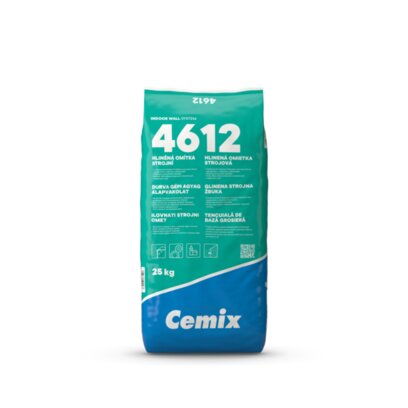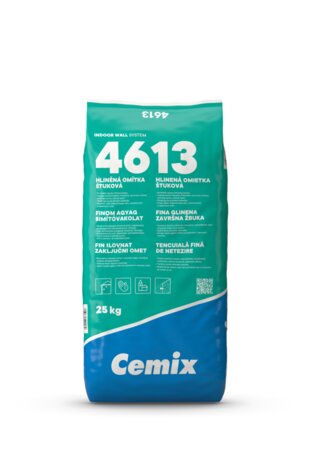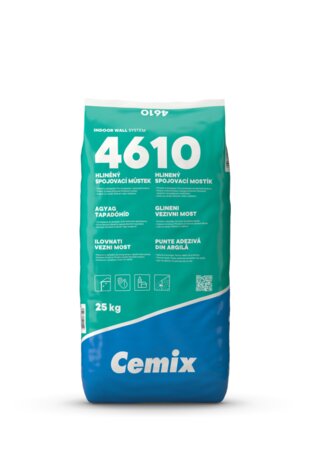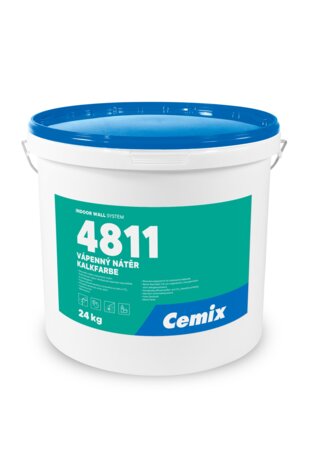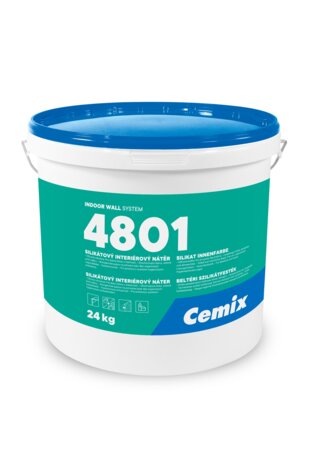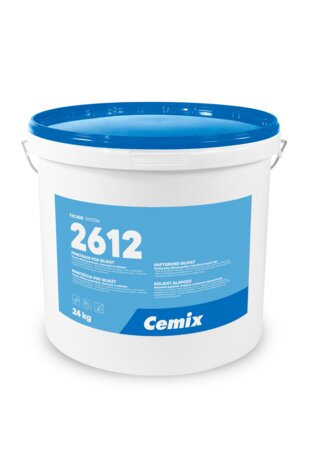4612
CLAY BASE PLASTER MACHINE
Natural and ecological living comfort
with sustainable building materials
- Increases natural living comfort: breathable, moisture-balancing, room climate regulating, heat-storing.
- Absorbs pollutants and odours: purifies the indoor air.
- Can contribute to good sound insulation.
- With optimised flow properties for machine use. Contains fibre reinforcement.
- Contains natural materials: For ecological construction (e.g. wood buildings, straw houses).
- Much lower carbon footprint than cement and lime mortars.
Area of application
- Indoor: wall + ceiling
- Suitable for monuments and historical buildings
- Vapour permeable
Processing method
- For machine processing
- For the construction and reconstruction of earthen buildings.
- For plastering clay building elements and all conventional building materials.
- For the surface treatment of straw and wooden substrates.
RECOMMENDED SYSTEM PRODUCTS
Processing details
Learn more about technical details for processing this product.
Substrate requirement
The substrate must comply with the applicable standards, must be solid, free of loose particles, free of dust, paint, residues of demoulding substances and efflorescence. It must be sufficiently rough, dry and evenly absorbent. The surface shall not be frozen or water-repellent. The substrate must be stable in volume.
Substrate preparation
Depending on substrate absorption and climatic conditions: masonry and absorbent substrates need to be thoroughly moistened and provided with a "false contact bridge" to spray the Cemix 4612. (consumption as a spray - approx. 3.2 Kg/m2) Provide Cemix 4610 clay joint bridge on concrete and material transitions. Where applicable, modify non-standard substrates by a suitable method to achieve the required properties. Dampen bricks for masonry thoroughly. The substrate shall comply with applicable regulations, standards, or material manufacturer's recommendations.
Preparation of the mixture
Prepare the material by pouring the dry mixture into the prescribed amount of water and mixing it. Use potable water or water complying with EN 1008 to mix the mixture. Mix to a homogeneous, lump-free mixture.
Water demand
| Quantity | Liters (Min) | Liters (Max) |
|---|---|---|
| 1 kg | 0,28 l | 0,32 l |
| 25 kg | 7,00 l | 8,00 l |
Processing instructions
Apply the plaster on the moistened surface with a trowel or other suitable tool. Then roughly flatten the surface with a squeegee to the desired level. After the plaster has set, level the surface with a trowel to the desired flatness. A minimum curing time of 1 day per 1 mm of applied layer is considered. The plaster forms a base and levelling layer for the stucco or final finish.
Application thickness
| Minimum layer thickness | 10 mm |
|---|---|
| Recommended layer thickness | 15 mm |
| Maximum layer thickness | 20 mm |
Consumption
Consumption renders
| Use Case | Min/Recommend/Max layer thickness | Applied thickness | Min. consumption in kg/m²/mm | Packaging size | Yield | |
|---|---|---|---|---|---|---|
| en_CZ | Base render | 10mm-20mm | 15 mm | 1.25 kg/m²/mm | 1 kg | 0.053 m² |
| en_CZ | Base render | 10mm-20mm | 15 mm | 1.25 kg/m²/mm | 25 kg | 1.333 m² |
| en_CZ | Pre-sprinkler, covering 100 % of the substrate | 4mm-5mm | 4 mm | 5 kg/m² | 1 kg | 0.2 m² |
| en_CZ | Pre-sprinkler, covering 100 % of the substrate | 4mm-5mm | 4 mm | 5 kg/m² | 25 kg | 5 m² |
| en_CZ | Pre-sprinkler, covering 50-75 % of the substrate | 4mm-5mm | 4 mm | 3.2 kg/m² | 1 kg | 0.312 m² |
| en_CZ | Pre-sprinkler, covering 50-75 % of the substrate | 4mm-5mm | 4 mm | 3.2 kg/m² | 25 kg | 7.812 m² |
Working time (potlife)
180 min
Treatment after application
After application, the direct negative effects of sun, heat, humidity and draughts should be avoided. Protect from frost and rain. Direct heating of the surface is prohibited.
Tool and cleaning instructions
Wash off tools with water immediately after finishing work. Clean dried residues mechanically.
RELATED ARTICLE
Technical parameters
| Main binder | Clay |
| Made of material | Aggregate, natural clay, cellulose and fibreglass. |
| Flammability class | A1 |
| Max. grain size | 1,2mm |
| Adhesion after dry storage in ≥N/mm²(ETAG004) | 0.1 |
| Thermal conductivity λ in W/(m.K) | 0.42 |
| Water vapour diffusion resistance factor µ | 15 |
| Dry bulk density in Kg/m³ | 1200 |
| Dry bulk density in Kg/m³ to | 1500 |
Download
Contact: Can we help you?
Ask us your question. Write to us whenever you want. We will reply within 48 working hours.
Telephone 800 022 848
Contact us on the toll-free Customer hotline
- Opening hours: weekdays 7:30 a.m.–3:00 p.m.
- Email: info@cemix.cz
